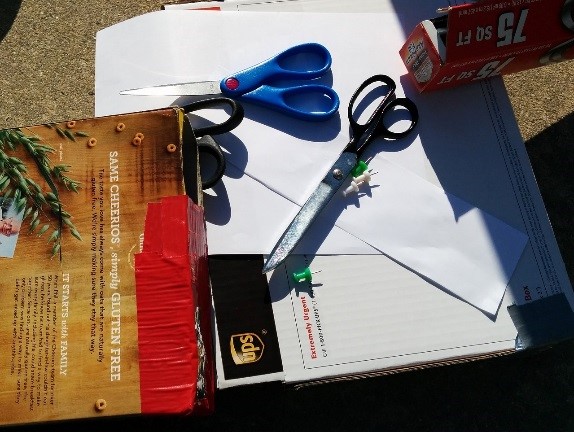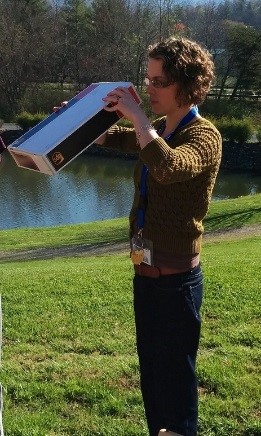Can’t get eclipse glasses? You can still view the eclipse!
August 15, 2017
By Amy Sayle
Can’t get eclipse glasses? Or are you worried the ones you have are counterfeit and unsafe? (If you bought them at Morehead Planetarium and Science Center, they’re legitimate.)
You can still view the eclipse – using pinhole projection, where you pass the Sun’s light through a small opening and look at the image that is projected onto the ground, wall, or an index card.
IMPORTANT: Pinhole projection does NOT mean looking at the Sun through a pinhole! It’s an indirect method that you use with your back to the Sun. Always supervise children when using any method to view the eclipse.
You can make pinhole projectors using readily available materials. Methods include:

1. Cereal box viewer
- This excellent 1-minute NASA video shows how to make a viewer using a cereal box, white paper, tape, scissors, and aluminum foil: https://eclipse2017.nasa.gov/how-make-pinhole-projector-view-solar-eclipse
- You can also find written directions with photos at Morehead’s Carolinas Solar Eclipse Party webpage. The direct link is https://moreheadplanetarium.org/sites/default/files/images/EclipseCerealBoxViewer.pdf
But it can be even easier than that. You can also do pinhole projection with:
2. A colander.
The holes can act like pinhole projectors; remember that you’re looking at the ground.
3. Index cards
Punch a hole through one, look at the projected image on the other. You may wish to incorporate aluminum foil — see https://www.jpl.nasa.gov/edu/learn/project/how-to-make-a-pinhole-camera/
4. Tree leaves
Look on the ground at the spaces between the shadows of the leaves.
5. Just your own FINGERS!
With your back to the Sun, cross your slightly outstretched fingers into a waffle pattern to create small openings; look on the ground for the grid of projected images.
To learn how to use methods like these and to see photos of the fingers method, see the section labeled “Pinhole Projection” at the top of this webpage: https://eclipse.aas.org/eye-safety/projection
Even if you have eclipse glasses (and if you do, please share), consider these other methods, too. A number of people have marveled to us about their memories of partial solar eclipses from years past where they were walking under trees and just happened to notice multiple images of the eclipsed Sun on the sidewalk.
You can try out these methods now. All you need is a sunny day. Of course until the eclipse, all you’ll see is a round image of the Sun. But while the eclipse is in progress*, you’ll see that the Sun appears to have a bite taken out of it as the Moon passes in front of it.

*For Chapel Hill, the partial eclipse starts on Monday, August 21, 2017, at 1:15 p.m., reaches its maximum (93% eclipsed) at 2:43 p.m., and ends at 4:05 pm Eastern time. Times vary for other locations. Learn more eclipse basics for North Carolina at https://moreheadplanetarium.org/10-things-for-north-carolinians-to-know-about-the-eclipse/
